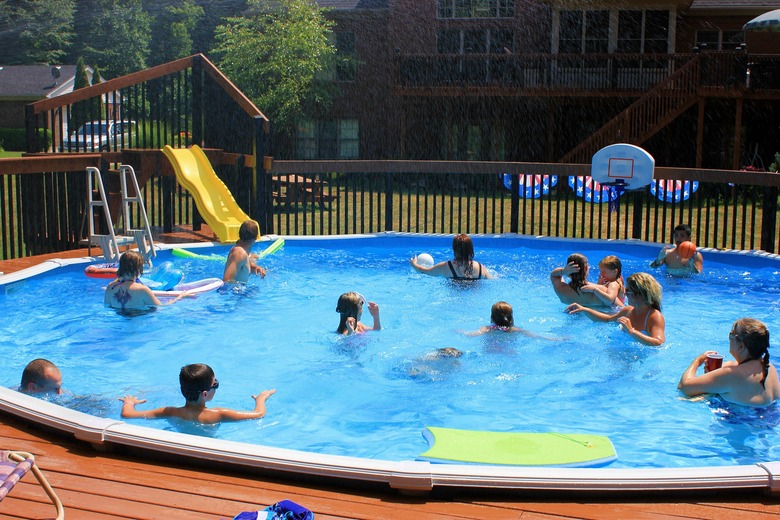How High Should The Water Level Be In A Pool?
Compared to balancing chemicals and maintaining filters and pumps, monitoring the water level in your above-ground or in-ground pool might seem very easy. Its simplicity, though, is precisely why it checking the water level is overlooked by many owners.
Ideal Water Height
Most pool professionals agree that the water level in both in-ground and above-ground pools should be at the midpoint of the pool skimmer. The skimmer is responsible for providing a pathway for water to flow to the filter where it is cleaned. Water enters the skimmer and moves to the filter through hoses or pipes, and back out from the filter into the pool through return jets. The skimmer is also a resting place for larger pieces of dirt and debris that are blocked by a skimmer basket.
For effective filter action, the water level should be at the midpoint of the skimmer. Too low, and water cannot flow into the filter system at all; too high and the flow will be less efficient.
If the Water Level Is Too Low
When the water level is too low, it can permanently damage the filter and its motor. The filter is not designed to suck in just air but needs the proper flow of water to work efficiently.
Because of the potential problems with the filter system, a water level that is too low is a more severe problem than high water. It is also the more common problem, by far. Simple evaporation and active swimmers splashing water out of the pool can both cause a pool's water level to drop a lot. Vacuuming, backwashing, and leaks in the liner and filter components can also cause a drop in water level. If you notice your pool water level dropping even during periods of low usage, you should investigate the liner and filter piping for signs of leakage.
In hot, dry weather when your family and friends are using the pool constantly, you should check the water level daily. Turn off the filter if the water level falls at or below the bottom of the skimmer, and fill the pool up immediately by adding water from a garden hose.
If the Water Level Is Too High
This is a considerably less common problem, and a less serious one. High water levels are usually caused by simple overfilling of the pool, although very heavy rains can also raise the water level. In Southern coastal areas, for example, heavy afternoon thunderstorms can cause a pool to overflow. If the water level is too high, debris will float back out into the pool rather than being trapped by the skimmer. And the flow of water into the main filtration system will be less efficient, because optimal flow occurs when the water surface is exposed in the skimmer. These are less serious problems than those caused by low water levels, however, and a high water level is easy to remedy.
If the water level is just lapping near the edge of the pool, you really don't need to do much of anything, as evaporation and splashing swimmers will likely lower the level pretty quickly.
If you've forgotten to turn off the hose during refilling, to the point where the water is overflowing onto your patio or yard, then backwashing your filter in the "drain" setting is probably the easiest and cleanest way of emptying water from the pool. Attach a pool hose to the filter and lead it to your nearest drain, then set the filter backwash setting to "drain." Allow the water to return to its normal height, to the midway point on the skimmer, and then resume normal filter operation.
